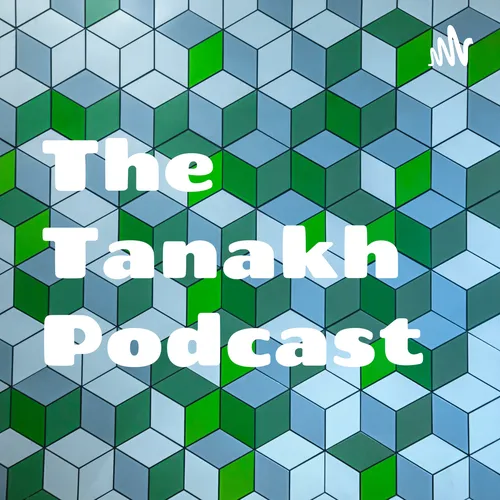
The Tanakh Podcast
Study Tanakh with Rav Alex Israel.
10 mins a day.
One chapter a day.
929 schedule.
- Update frequency
- every day
- Average duration
- 11 minutes
- Episodes
- 767
- Years Active
- 2022 - 2025

Trei Assar: Hosea ch.10 - You Reap What You Sow
In this chapter Hosea berates the people for:
v.1-8 - Their idolatry and reliance on foreign powers
v.9-15 - The lack of interpersonal integrity, kindness and social cohesion
Both sins are united by …

Trei Assar: Hosea ch.9 - The Spirituality of Food
Today's podcast is about the spiritual power of food, particluarly the produce of the land.
Hosea warns the people that once the nation are exiled: "Their food will be only for their hunger, It shall…

Trei Assar: Hosea ch.8 - Exile and Torah
Today we discuss the mysterious phrase 8:12 - 'אכתוב לו רובי תורתי כמו זר נחשבו' Either: "Though I write for him the great things of My Torah, they are reckoned a strange thing" Or the Midrash (Ta…

Trei Assar: Hosea ch.7 - The Bakery
Hosea uses a parable of a bakery to rebuke the kings and aristocracy for their dereliction of leadership.

Trei Assar: Hosea ch.6 - "Hessed, not Sacrifices!"
Chapter 6 finds the people expressing a desire to retunr to God.
But God rejects their overtures as being ephemeral, temporary. Instead he encourages them to repair their religious and political cult…

Trei Assar: Hosea ch.5 - Infighting
In this podcast we offer the historical background to the accusations of Hosea: Political rivalry, in-fighting, political opportunism and factionalism bring the northern kingdom to a point of weaknes…

Trei Assar: Hosea ch.4 - The Sexual Worship of Baal
In this chapter Hosea worships the nation, their priests and prophets for "zenut" - for promiscuity. Why is this phrase so central in Hosea? How was idolatry connected to degenerate sexual practices?

Trei Assar: Hosea ch.3 - Exile Detox
A short and enigmatic chapter.
We will read it with the approach of the Abarbanel and Rav Kook.

Trei Assar: Hosea ch.2 - Wilderness and Renewal
Hoshea ch.2 contains several of the Bible's most sublime expressions of love. But how does Hoshea love a promiscuous wife? How does God love his wayward people, Israel?

Trei Assar: Hosea ch.1 - Promiscuity
Hosea is instructed to marry an unfaithful wife, and have children with them.
What is the meaning of his marriage to a woman of this sort?
What is the upshot of the names that he gives her children?

Trei Assar - Introduction
What is Trei Assar?
What historical period does it cover?
What are its major themes?

Yechezkel ch.48 - Tribal Territories
Chapter 48 gives us the division of the land into 12 tribal units and a 13th district for the Levites, priests, Nasi, city and Temple. The city is given a new name.
With this chapter, we complete our…

Yechezkel ch.47 - Water from Jerusalem
In our chapter water emerges from the Temple, creating a gushing river that descends to the Dead Sea and makes it habitable.
What might all this mean?

Yechezkel ch.46 - Bowing to God
Our Chapter depicts Shabbat, Rosh Chodesh and Chagim (Jewish Holidays) as opportunities for both the "Nasi" and the common people to gain access to the (outer courtyard of the) Temple, and to bow bef…

Yechezkel ch.45 - The Nasi

Yechezkel ch.44 - New Priests. New Rules
The laws of the priests, the kohanim, as mentioned in Ezekiel ch.44 are quite different from those detailed in the Torah.
What shall we make of these differences?

Yechezkel ch.43 - God Returns

Yechezkel ch.42 - The Temple at a Distance
How is Ezekiel's Temple different from all previous Temples?
Why does Ezekiel's Temple have an outer courtyard, not present in previous Temples?
Why is the floorplan so large? 500x500 cubits?
Why may…

Yechezkel ch.41 - The Temple Part 2
Ezekiel continues his tour of the Temple.
Today we discuss how our eating practices are seen by the Midrash and Halakha as a reflection of the Temple.

Yechezkel ch.40 - The Temple Part 1
Ezekiel finds himself transported in a vision to a virtual tour of a Temple in Jerusalem. But this Temple is radically different from the one that we know.